Introduction to Sedum Plants and Wilting Symptoms
Imagine strolling through a vibrant garden, basking in the presence of flourishing sedum plants, only to discover droopy leaves and lackluster stems. The once sturdy and lively sedum, a cherished gem among garden aficionados for its hardiness and aesthetic appeal, seems to succumb to an unseen adversary. As gardeners, we’re often struck with puzzlement: why is my sedum wilting?
The answer isn’t always straightforward, as sedum plants are known for their resilience and fuss-free nature. Yet, even the toughest plants have their Achilles heel. Before panic sets in, let’s recognize that wilting is a cry for help, a signal that our succulent friends are facing distress. It could be the aftermath of environmental stressors or perhaps a clue hinting at improper care. Regardless, a wilting sedum requires prompt and informed attention to restore its vigor.
While wilting symptoms are worrying to any plant enthusiast, they also serve as a starting point for recovery. Understanding the causes is key to reviving these succulents. Could it be thirst from the summer heat or the result of cold drafts creeping in during the cooler months? Maybe it’s the wrath of overzealous watering or the silent whisper of a nutrient-poor soil. Our goal is to peel back the layers of this mystery with a gentle hand and an observant eye, steering our sedum plants back to their original splendor.
For anyone new to the captivating world of sedums, there’s a wealth of information to help you nurture these versatile beauties. Whether you’re a green-thumbed guru or testing the waters of horticulture, a thorough guide to growing and caring for sedum plants can elevate your gardening game. Furthermore, the community of sedum savants is always brimming with shared experiences and tips to ensure the health and beauty of these enduring plants.
In need of tips to bring back the luster to your leafy companions? Peruse the insightful post on Timing Your Plant’s Division for Lush Growth for a dive into maximizing the potential of your sedum through strategic care methods.
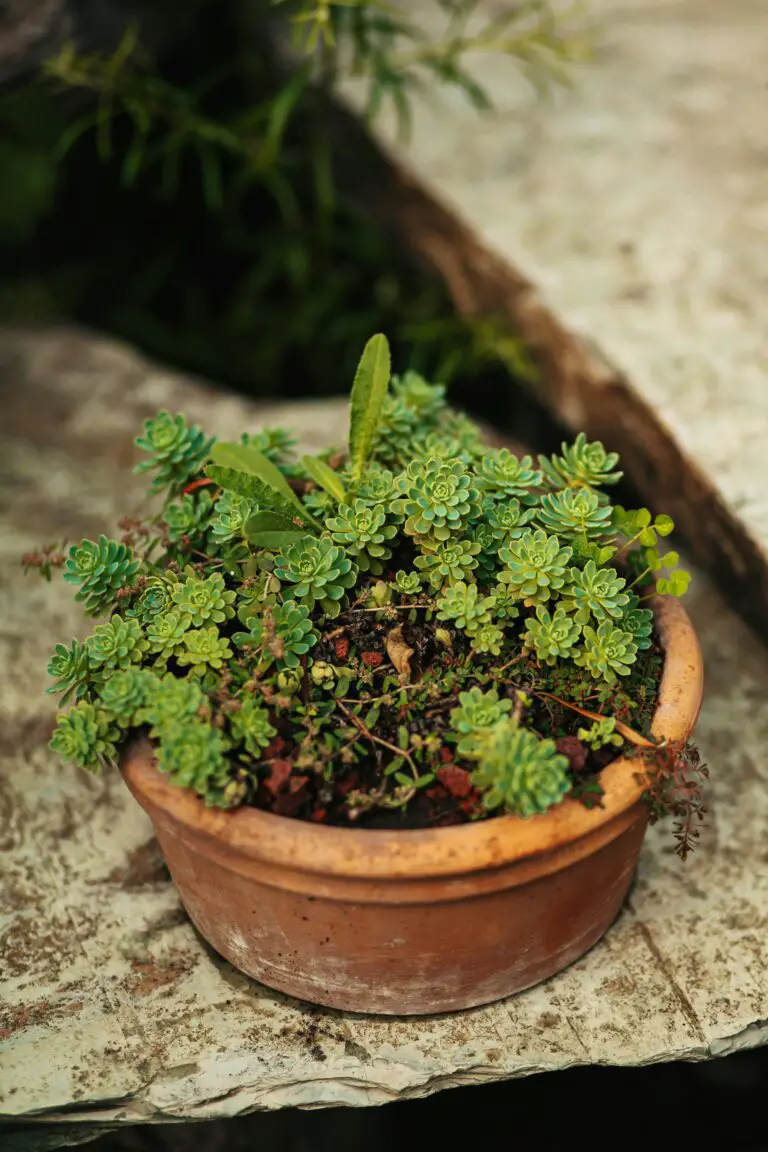
As we delve into the reasons behind your sedum’s woeful appearance, we remember that every challenge is an opportunity for growth—both for us and our cherished plants. By identifying and addressing the root causes of wilting, we renew our commitment to the thriving journey of our sedum garden attendees, ensuring that each plant can stand tall, bask in its glory, and add a touch of green splendor to our living tapestries.
Understanding Sedum Watering Needs
Like a quirky character in a sitcom that can’t decide between two love interests, your sedum plant might be wilting because it’s toying with two extremes: too much love (water) or not enough. Yes, the art of hydration is a delicate dance for these succulent favorites.
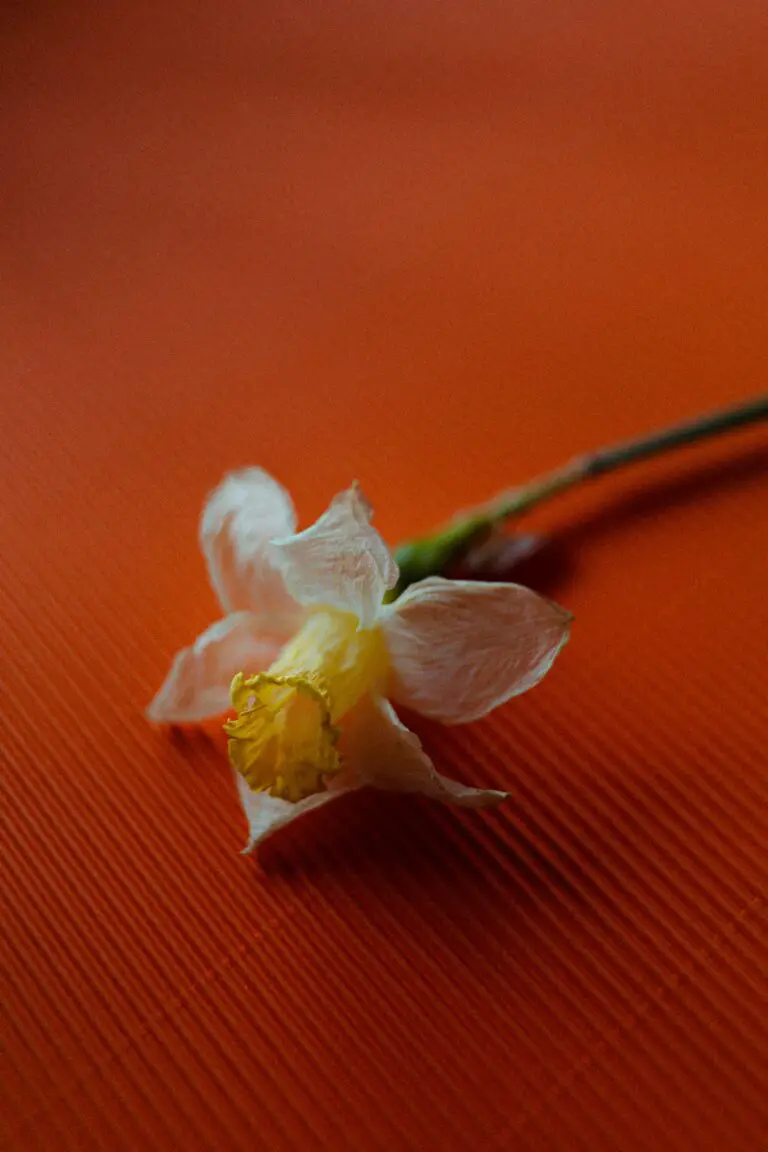
When we drench our sedum buddies with a deluge of H2O, envisioning them gleefully gulping down every drop, we may inadvertently trigger the tragic opera of wilting. Conversely, if we’re as forgetful with our watering routine as we are with our car keys, the poor plant might just crumple in thirst-driven despair. Finding that hydration sweet spot is key.
Consider this: Your sedum plant is much like a camel in its desert habitat – it wants a hearty sip to fill its hump, and then it’s good to go for quite a while. So, when you go about quenching your sedum’s thirst, make sure to soak it thoroughly and then allow the soil to dry out fully between waterings. This ‘drench-and-dry’ technique cheers on the roots to stretch out, seeking moisture and, in turn, becoming the Paul Bunyan of the root world – strong and robust!
If you’d like to delve deeper into the art of sedum care, take a peek at our detailed guide on cultivating your succulent garden. It’s a trove of tips and tales to help your sedums thrive, beyond just sorting out their watering whims.
Remember, every sedum plant is a story, with its roots as the narrator. Listen closely, and you’ll know exactly when to pour the water of life and when to hold off for the betterment of your verdant companion.
The Role of Lighting and Temperature
When it comes to keeping your sedum happy and perky, lighting and temperature are like the seesaw in the playground of plant care. Tip the balance, and your green buddy might just start throwing a fit—in the form of wilting. Let’s unpack how these two key factors play nice (or not) with your sedum’s health.
First off, sunlight. Imagine you’re lounging on the beach without a care in the world, soaking up those warm, cozy rays. Your sedum’s pretty much the same, thriving with a good dose of sunshine. But here’s the catch—not too much. Just like us, if a sedum gets too much sun, it can get the botanical equivalent of a sunburn. And on the flip side, insufficient sunlight leaves your succulent reaching out for more, literally stretching out and losing its compact, spunky shape. It’s all about finding that ‘Goldilocks zone’ of just right.
Now, let’s talk temperature. Picture your sedum as a hardy little mountaineer, able to withstand a chilly climate. But if that mountain weather starts to yo-yo unpredictably, our little plant friend gets stressed out. Fluctuations in temperature, especially swift changes from hot to cold, can lead to a droopy, unhappy sedum. Consistency is key—much like the comfort of your favorite sweater on a brisk day.
A real-life example comes to mind. I once met a sedum named Sid (yes, I name my plants), who lived by a window. Morning light was his jam—but come afternoon, the blazing sun turned his spot into a sauna. Sid started to wilt faster than ice cream on a summer sidewalk. The solution? A sheer curtain to filter the strong rays and a subtle shift away from the window. With that tweak, Sid was back to its jubilant self.
Keep your sedum’s light and temperature consistent, and you’ll see it stand tall and proud. Don’t just take my word for it—try it out! And remember, if you need more guidance on keeping your green companions in tip-top shape, check out art of succulent care; it’s a veritable treasure trove of tips.

There you have it, plant pals. Keep those sedums basking in the right amount of sunlight and tucked away from temperature tantrums, and you’ll be the talk of the gardening club—or at least your sedum will be living its best life.
Soil and Drainage Factors
Let’s dig into one of the most pivotal aspects of sedum vitality – the foundation beneath it all, the soil! Imagine building a house on a shaky foundation; no matter how strong the structure, it will eventually crumble. Similarly, sedum plants require a solid base, and that starts with proper soil and drainage. Picture this: pristine soil that’s fluffy and free, allowing roots to breathe and stretch out unimpeded. That’s the dream for any plant, and your sedum is no exception!
Why is ideal drainage so critical? Without it, sedum roots are swimming in a pool of stagnancy, which is a fancy way of saying they’re drowning. Yes, plants can drown, and it’s as sad as it sounds. Root rot becomes a real concern when water lingers too long without an escape route. The symptoms? A once perky, vibrant sedum starting to slump like it just got the worst news. But don’t fret, there’s hope!
Take the case of Betty, a burgeoning gardener, whose sedum started wilting one sunny afternoon. After some sleuthing, she discovered the culprit: compacted soil that held water like a sponge. The fix? She became an advocate for well-draining soil which, according to experts on GFL Outdoors, should usher away excess water briskly. A change was due – she mixed in sand and perlite to her garden bed, and it was as if her sedum plants had found their personal nirvana.
So what’s the moral of our garden tale? Your sedum doesn’t need a life preserver; it needs the right soil mix. The right balance can prevent waterlogged woes – it could mean the difference between drooping despair and standing tall with sedum satisfaction.
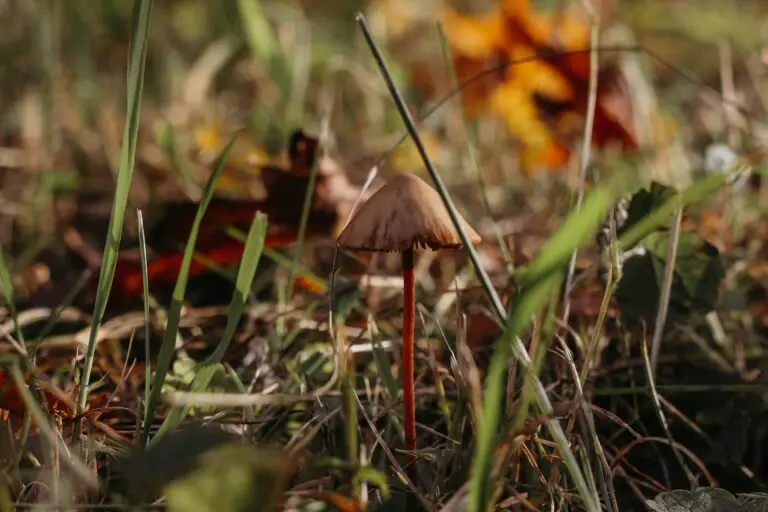
Common Pests and Diseases
Are you staring at your sedum with a frown, wondering why it’s taken on the look of a wilted salad? It could be pesky intruders making a meal of your plant! Let’s zero in on the culprits that could be causing your sedum distress.
First off, meet the aphids. These tiny, sap-sucking bandits can be green, black, brown, or pretty much any color of the rainbow. They love to throw a party on the underside of your sedum’s leaves, turning them yellow and misshapen as they guzzle away. The solution? A good blast of water to knock them off, or introducing natural predators like ladybugs into your garden.

Next on our ‘most wanted’ list are mealybugs. Imagine miniature cotton balls that have decided to move onto your plant — yep, that’s them. These guys are stealthy, hiding in the nooks and crannies including the root system, and they can turn your previously perky sedum into a wilted mess. Getting rid of mealybugs can be a real treasure hunt, but wiping them with alcohol-dipped cotton swabs usually sends them packing.
But it’s not just bugs that can be the bane of your sedum’s existence; fungal diseases also love to take root, particularly in overly moist conditions. ‘Root rot’ sounds as nasty as it is — it’s like your plant’s foundations are turning to mush! Ensuring that your sedum has well-draining soil and isn’t overwatered is key to avoiding this calamity.
Every gardener should play the role of an amateur detective when it comes to keeping their plants in tip-top shape. Regularly check your sedum for signs of pests and disease, and act swiftly to implement prevention and treatment methods. After all, your sedum isn’t just a plant, it’s a part of your outdoor family. With your newfound knowledge and a little bit of elbow grease, your sedum will be back to standing tall in no time!
Nutrient Deficiencies and Fertilization
Have you ever spied on your sedum from the corner of your eye, only to see it slouching over like it’s had a rough day? It’s not just being dramatic; there’s a chance it’s starving for nutrients! Like us, sedums need a balanced diet. Imagine bingeing on nothing but popcorn for a week; you’d be wilting too!
Nutrient deficiencies in sedum can turn a once plump, jade-like champion into a disheartened, droopy dud. The common culprits? Often, nitrogen, phosphorus, and potassium – the ‘NPK’ trio – are in short supply. Nitrogen keeps the leaves sprightly and green, phosphorus is like a pep talk for the roots and blooms, and potassium, it’s like the workout coach for overall plant strength.

But don’t go sprinkling fertilizer like it’s fairy dust – more isn’t always merrier. Like overdoing it with vitamins, too much fertilizer can cause nutrient burns or even spoil the soil broth. It’s about finding that ‘Goldilocks Zone’ – just right. Do your sedums a favor and serve up a well-balanced meal, using a fertilizer concocted specifically for succulents. This way, they’ll get the boost they need without the side effects.
Here’s the real scoop: fertilize your sedums in the growing season when they’re chomping at the bit for resources. Scale back during their winter snooze. When spring rolls around, and life juices are flowing, a gentle touch of fertilizer can be just the wake-up call your sedum needs to stand tall and proud, ready to face the sun.
Best Practices for Sedum Plant Care
Reviving your succulent starts with understanding the unique needs of sedum plants. Known for their hardiness and diverse varieties, sedums can still face the dreaded droop without proper care. Embrace a greener thumb by adopting the best practices to keep your sedum standing strong. Let’s dig into the soil of wisdom together!
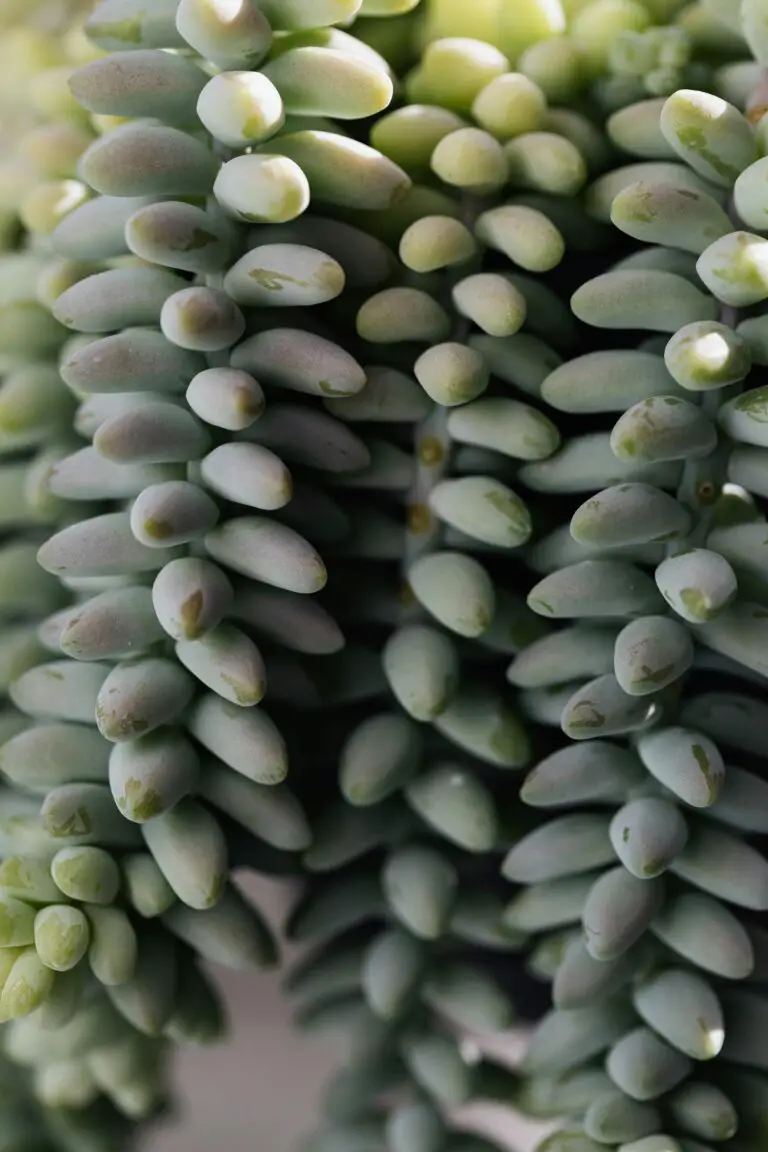
Consider the case of Janice, an avid gardener who noticed her usually sprightly sedum taking a turn towards the wilted side. A quick assessment revealed the issue—her succulent was suffocating in soggy soil. Sedums require well-draining ground that mimics their native, rocky habitats. By repotting her plant with a sandy, permeable mix, Janice saw her sedum’s revival in just days.
Repotting: Breath of Fresh Air for Root Health
Take a leaf out of Janice’s book; don’t let your sedum sit in wet soil. A fresh potting experience is like a spa day for your succulent. Ensure you’re using a container with ample drainage holes and a soil mix that allows roots to breathe easy. If you’ve been clutching the same pot for years, it might be time for an upgrade. A root-bound sedum is a stressed sedum!
Pruning: The Secret to Shapely Succulents
Next, let’s talk tidiness. Pruning isn’t just for roses! Regular trimming keeps your sedum shapely and prevents overgrowth, which can lead to insufficient light exposure and airflow. Just this spring, my neighbor Theo snipped back his overachieving sedum. The result? A plant with improved structure and vigor, ready to face the sun with confidence.
Seasonal Care: Summer Siestas and Winter Wonders
Seasons change, and so should your care routine. In the blazing summer heat, sedums might require more water to offset the rapid evaporation but don’t drown them in enthusiasm. Conversely, during the winter dormancy, watering should be reduced to a bare minimum. Remember, a dormant sedum is not a dead sedum—it’s just waiting for spring’s awakening!
Embrace these simple yet effective care tips, and you’ll be on your way to a garden full of vibrant, upright sedums. Keep a keen eye on their needs, and soon, you’ll be the one giving advice on sedum care!
Reviving a Wilting Sedum
Witnessing your sedum’s perky leaves turn limp can be disheartening—like watching ice cream melt on a hot day. The good news is, we can often coax them back to their former plump and spirited state. So, let’s roll up our sleeves and dive into diagnosing and nursing your sedum back to health!
Most people don’t know that sedums are like the camels of the plant world; they store water in their leaves, which is why they usually thrive with neglect. However, when they start sagging, it’s a distress signal. It could be from overwatering, poor drainage, too much sun, or not enough love. Let’s take Miranda, a friend of mine, who thought “full sun” meant the sun’s equivalent of a death stare. Her sedum turned into a wilted mess until she dialed back the sunlight exposure.
Here’s where it gets exciting. First, check the soil. Is it soggy? Root rot might be playing the villain. Gently remove your plant from its pot and inspect the roots. White and firm? All good. Brown and mushy? We have a problem. If it’s the latter, trim the rotted roots away, and let’s give it a fresh start with well-draining soil in a clean pot.
Could dehydration be the culprit? Even the most drought-tolerant plants need a drink once in a while. Imagine forgetting your water bottle on a hike—the same goes for your sedum. A thorough watering followed by a proper dry-out period can often perk them right up.
What if it’s neither drowning nor parched? Pests or diseases could be lurking. Examine your plant like a detective. Any tiny insects or suspicious spots? Swift intervention can save the day. Neem oil or insecticidal soap might just be your sedum’s superhero.
Bear in mind the environment. Is your plant in a less-than-ideal spot, like a drafty window or a scorching patio? Environments can change with the seasons. Take Ellie’s sedum, which sat happily on her balcony until winter struck. A quick relocation indoors, and it bounced back like it had just returned from a spa retreat.
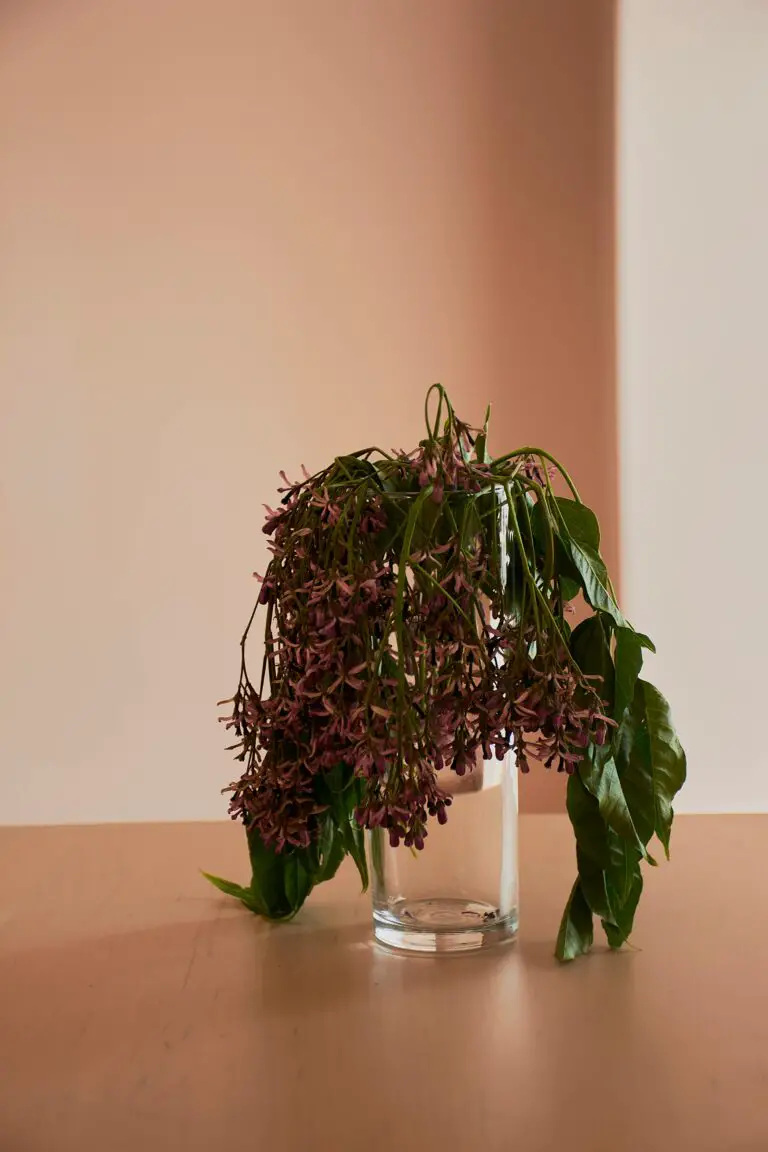
In this rollercoaster ride of reviving your wilting sedum, remember that change won’t happen overnight. Give your green buddy time to show signs of recovery. A bit of trial and error, patience, and your sedum will be standing tall, ready to withstand the tests of time and nature.
Frequently Asked Questions
Have you ever looked at your sedum plant and found it looking sadder than a rainy day in Seattle? You’re not alone! Let’s dive into the nitty-gritty of why your beloved succulent might be wilting and how you can perk it right back up.
Why Is My Sedum Wilting After Repotting?
Just like us after a big move, sedum plants can get stressed after being repotted. Imagine you’ve just been plucked from your cozy bed and plopped into a new environment — yikes! Give your sedum some time to adjust, ensure the soil is well-draining, and avoid overwatering. With some love and patience, you should see it bounce back.
Can Overwatering Cause My Sedum to Droop?
Overwatering is like giving your sedum an all-you-can-drink ticket — at some point, it’s just too much! These plants love their cocktails on the drier side. So, if you’re flooding the pot more often than a broken fire hydrant, it’s time to dial it back. Let the soil dry out completely before giving your succulent another sip.
Does Underwatering Lead to a Limp Sedum?
On the flip side, underwatering can make your sedum plant as droopy as a week-old birthday balloon. Sedums need consistency, so if you’re the forgetful type (no judgment!), it might be a good idea to set a watering schedule. Just don’t go from zero to hero overnight — ease into the hydration to avoid shocking your plant.
Could Lack of Sunlight Be Wilting My Sedum?
Plants and people have one big thing in common: they both need the right amount of sun to thrive. If your sedum isn’t getting enough light, it may start to look as droopy as a sun-starved tourist. Move it to a brighter spot, but be careful not to scorch it — a gentle transition is key!
What Pests Cause Sedum to Wilt?
Unwelcome guests can also throw a party at your sedum’s expense. If your plant is throwing a fit, pesky pests like aphids or mealybugs might be crashing the bash. Keep an eye out for these tiny gatecrashers and show them the door with some organic pest control before they drain your sedum’s will to stand tall.
Remember, the key to a perky sedum is balance — not too much water, just enough light, and keeping those party-crashing pests at bay. Listen to your plant, and you’ll have it standing tall and proud in no time!


